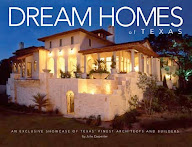While designing a house in the Italian Renaissance style is not an easy task, with all of the proper details and scale, furnishing one can be difficult as well. With a little research, hard work and attention to appropriate styles of mantels, lighting and architectural details you can accomplish the look. In addition, finding the appropriate furniture is important as well. Today I am focusing on the mantels and some mirrors/artwork that are appropriate (along with a couple of chandeliers) to help you.
With the arrangement of rooms for today's living, I like to classify certain architectural details (like mantels) for certain areas of the house. In original Italian houses, most every room used by the owners were formal. Today’s home is much different, as we all use every room in the house. Today, formal areas should have more formal mantels, etc. For a living room, dining room or any formal area here are some styles that are great depending on the formality of your house.


These are two reproduction mantels that, with their heavy carving, would be appropriate for your formal areas.
The two below are antique mantels that would be appropriate for either formal or informal (say a family room). However, I would use both of them in either place.


The mirrors below, and the portrait, are perfect examples of pieces that would be great for an Italian Renaissance house. Of course, I am not opposed to using French Trumeau’s such as the one mentioned in my French Interiors post to go above the mantels shown above as well.
Here are two more pieces that are great to incorporate. The commode can be used in many places. In my previous post on Italian Renaissance houses I showed a picture of a house we built/remodeled in Fort Worth. My clients found a piece similar to this commode that I had built and an artist finished the work for their daughter's bathroom vanity. They also found a fountain similar to the one below that we converted into a pedestal sink for their powder bathroom by carefully drilling holes in the back and mounting a wall mount faucet. More pictures of both the commode and the fountain pedestal can be found in Betty Lou Phillips book, Inspirations from France & Italy.
These chandeliers are great examples of what would be appropriate for an Italian Renaissance house. While I love all of them, I particularly love the last one which is a 17th Century reproduction that I can get for you for about $1,700. I have actually ordered one for my own house.


















































